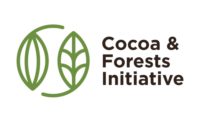The Hershey Co. has expanded its Cocoa For Good program by committing to 100 percent direct-sourced cocoa in high-risk areas by 2025, which will include all of its cocoa sourced by its suppliers from Cote d’Ivoire and Ghana.
Hershey said the expanded commitment will make cocoa coming from these countries traceable from the farm to the first point of purchase, giving Hershey a clear line of sight into where all of its cocoa from West Africa is grown and how it is produced – providing more transparency for consumers and all stakeholders.
In 2012, as part of the company’s long-standing efforts to create more sustainable cocoa communities, Hershey committed to sourcing 100 percent certified and sustainable cocoa by 2020 – a goal it reached in January. Hershey launched its Cocoa For Good in April 2018, furthering its cocoa efforts by investing $500 million by 2030 to nourish children, empower youth, build prosperous communities and preserve natural ecosystems.
“By purchasing all our cocoa as certified and sustainable, we directly support higher incomes for farmers and improve labor and environmental standards,” said Jeff King, senior director of global sustainability and social impact. “We recognize, however, that certification is not enough. Transitioning to 100 percent direct cocoa sourcing for these high-risk areas gives us more transparency into our cocoa supply chain and enables us to provide more support to farmers and scale-up programs such as Child Labor Monitoring and Remediation (CLMRS) to 100 percent of our Cote d’Ivoire and Ghana-sourced cocoa by 2025 to help end child labor.”
A majority of the world’s cocoa comes from West Africa, where poverty is the biggest cause of labor issues. Cocoa farmers face challenges such as a lack of local infrastructure, the impacts of climate change on agriculture, and the ability to find workers for small family farms.
Hershey is driving transformational change to create a sustainable cocoa supply chain. This requires engaging and collaborating with stakeholders across sectors – farmers, government, suppliers, NGOs and peers – to overcome the challenges of how cocoa is bought and sold.
Hershey’s expanded Cocoa For Good program doubles down on its four key areas of Nourishing Children, Empowering Youth, Prospering Communities and Preserving Ecosystems. This encompasses:
Improving farmer incomes: To help increase farmers’ income from cocoa, Hershey is investing in farmer training to enable growing more cocoa on less land and improving productivity, which helps address poverty, the main driver of labor issues in cocoa.
Hershey is also helping farmers diversify their incomes with alternative crops and other income-generating activities, as well as paying farmers a premium for their cocoa. In addition to these efforts to raise incomes, Hershey is paying the Ivorian and Ghanaian Living Income Differential (LID), a premium paid to the government that seeks to help support farmer income.
Elimination of child labor, including forced and slave labor: Hershey is expanding its Child Labor Monitoring and Remediation Systems to assess more than 125,000 children and provide any remediation that is necessary, such as providing birth certificates so children can stay in school. This is a 350 percent increase in the number of children being helped through Hershey’s CLMRS work since 2018. To date, this CLMRS work has found zero instances of forced labor within the segment of the Hershey cocoa supply chain assessed.
Expanding the ViVi school feeding program: In partnership with Project Peanut Butter and the Ivorian National Nutrition Council, Hershey is opening a second ViVi nutritional supplement factory in Cote d’Ivoire and will begin distributing the food to 25,000 Ivorian school children this year. ViVi, made from locally grown peanuts, has been effective in Ghana to reduce anemia and improve educational performance.
Strengthening zero-deforestation commitment through Cocoa & Forest Initiative: Hershey is increasing coverage of its satellite monitoring systems and mapping 100% of the West African cocoa farms in its supply chain, ensuring real-time and accurate monitoring. Additionally, the company is supporting new solutions for farmers to obtain affordable land titles to promote farm rehabilitation and increase shade-grown cocoa.
“We are committed to making these important changes, and while we know it will take time, we are confident that together with our communities, suppliers, governments and industry partners we can make a positive difference to reassure consumers who love our products and look to us for moments of goodness in their lives,” said Hershey’s Chris Abbott, senior director of cocoa strategic sourcing.






